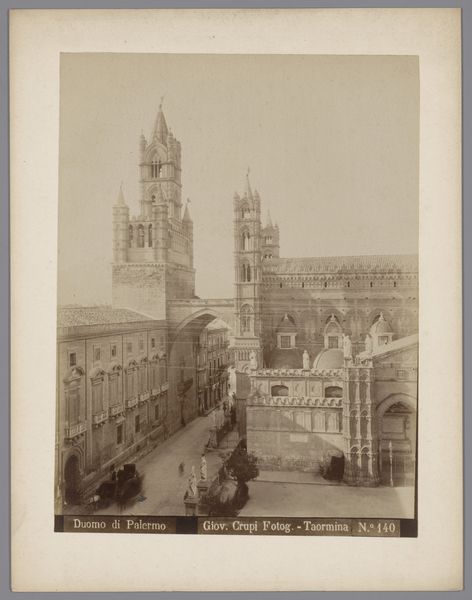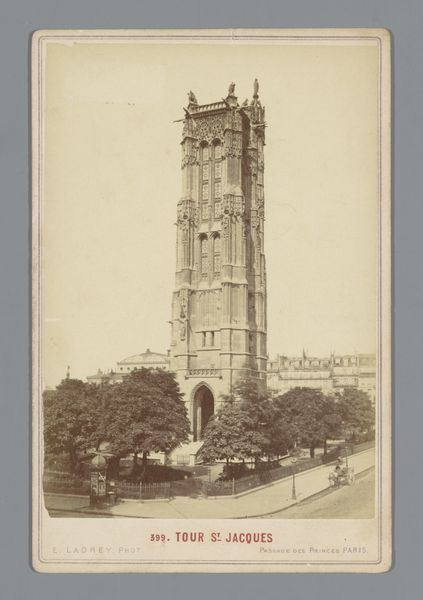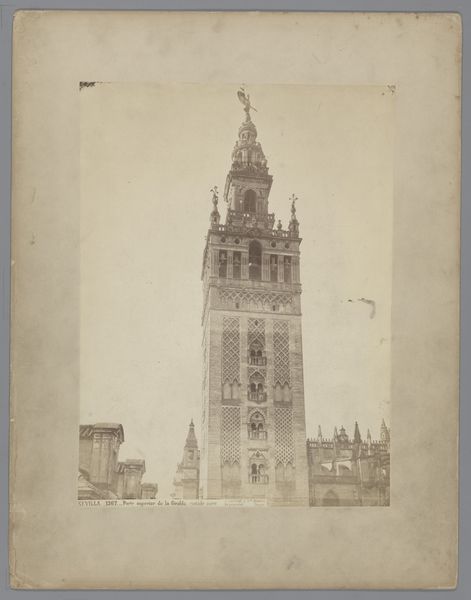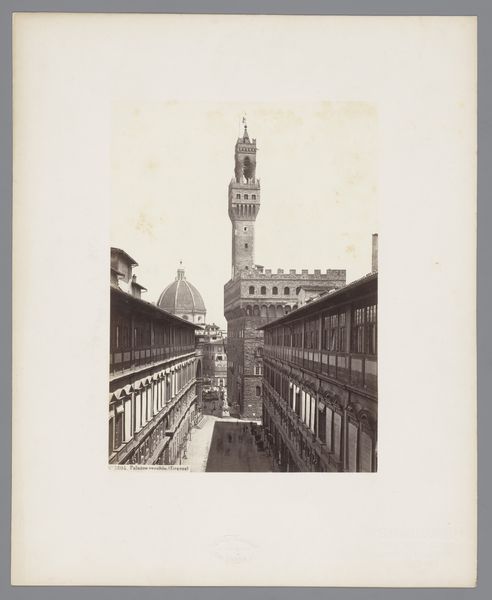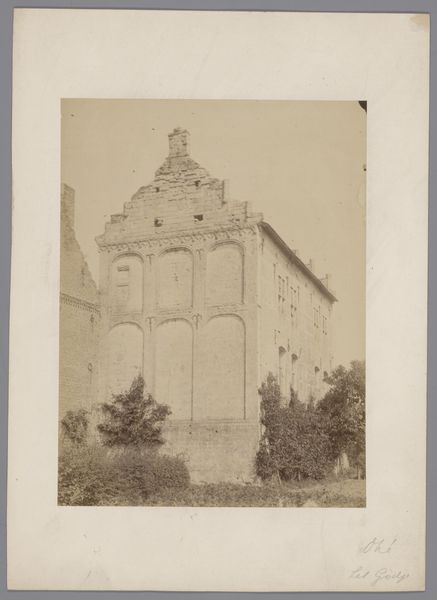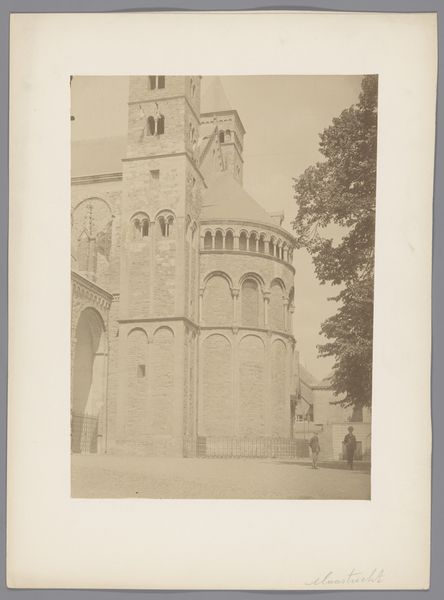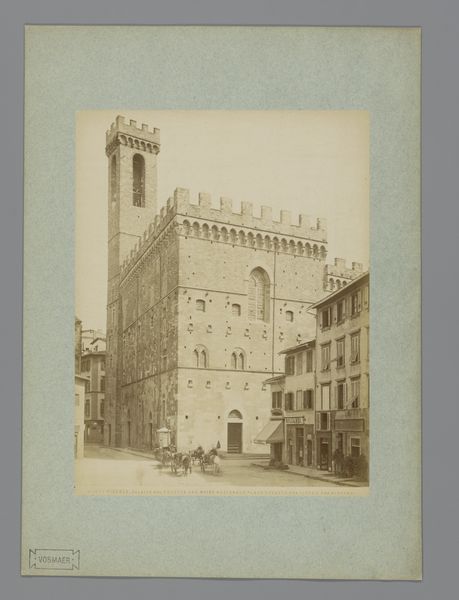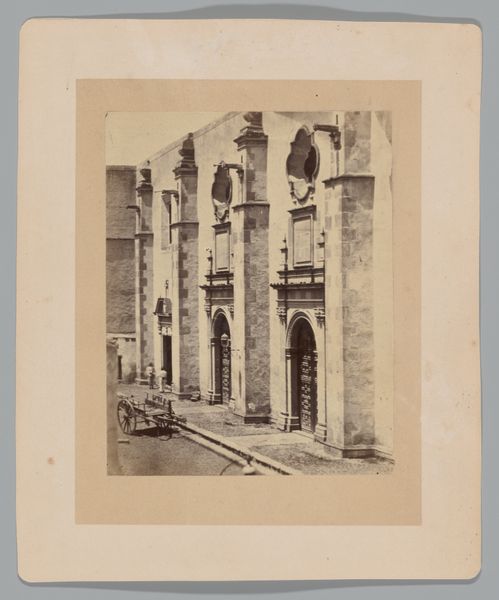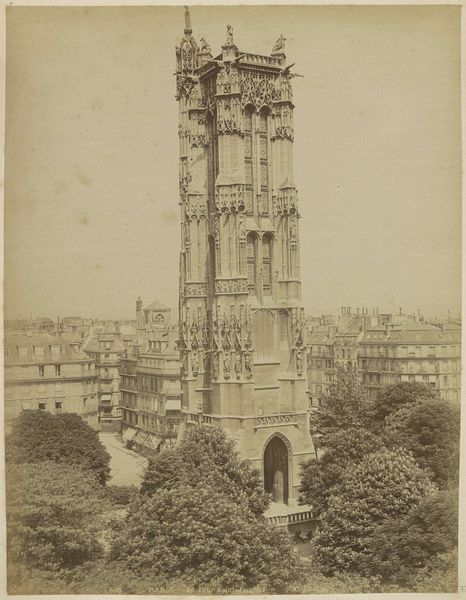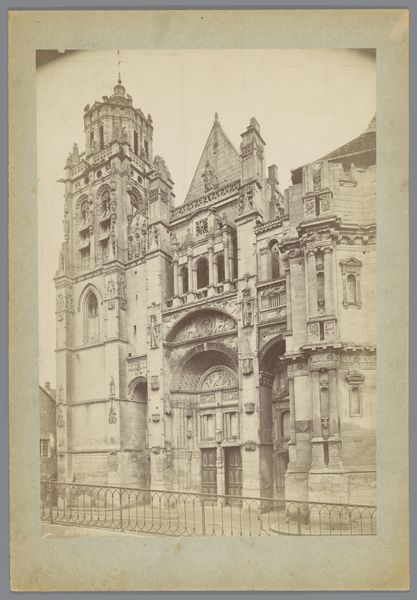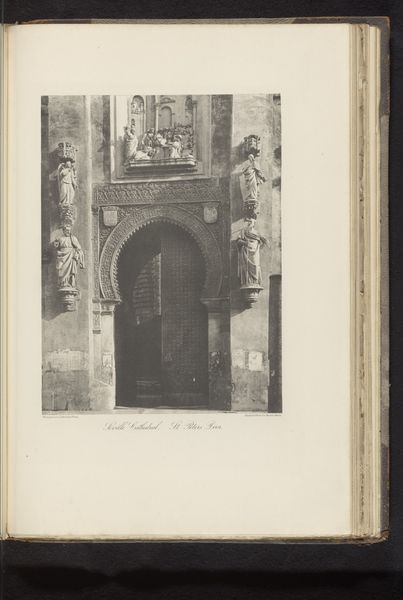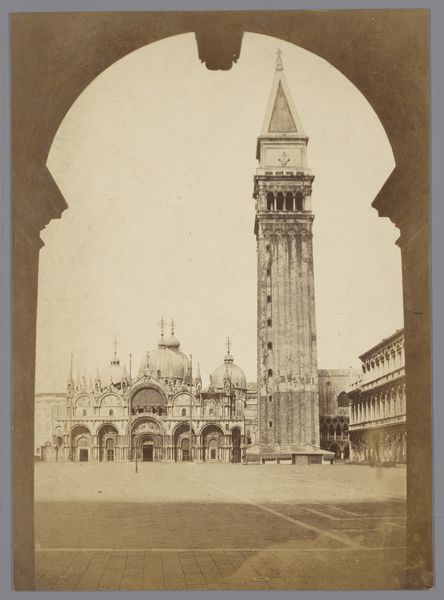
print, photography, albumen-print
# print
#
landscape
#
photography
#
cityscape
#
islamic-art
#
street
#
albumen-print
#
realism
Dimensions: height 338 mm, width 247 mm
Copyright: Rijks Museum: Open Domain
Curator: Here we have an albumen print dating from approximately 1875 to 1900 by Juan Laurent, depicting the lower section of the Giralda in Seville. Editor: The Giralda dominates the frame. I’m immediately struck by its verticality—almost oppressive. And the tones, muted and sepia-like, lend a sort of gravitas, or a feeling of antiquated permanence. Curator: Note the technique. Albumen printing was a common process, yet it provided incredible detail. The photograph itself is interesting when we consider it as commodity and social record: it speaks to a rising bourgeois desire to document their travels and experiences. The Giralda’s transformation from mosque minaret to bell tower, layered with Islamic and Christian designs, offers an incredible visualization of changing imperial powers. Editor: Visually, the layering is fascinating! The geometric patterns covering the tower are wonderfully intricate. Look how the eye is drawn upwards, but the architectural elements at the base and to the right create a sense of grounded stability. The balance is expertly achieved. The tonality throughout produces subtle shadows highlighting surface textures across the image, creating further intricacy. Curator: And we shouldn’t forget the laborers and industry behind this image. There were collodion positive prints used, assistants...mass production. How many other copies of this image exist, contributing to a wider European view of Spanish culture and architecture? The accessibility speaks to shifts in art production and consumption. Editor: From a formal perspective, it's compelling how the lines of the surrounding buildings converge toward the Giralda. The photographer's placement creates this visual focus—you could suggest the city is oriented around the monument, at least from this street view. It's masterful! Curator: Thinking of its circulation during that era is fascinating. Who was consuming these images, and what did they mean to them, socially and politically? Editor: Agreed. It's fascinating how this photographic medium lends itself well to highlighting geometric elements so they become not merely visible, but truly central. A fresh visual reading of urban architectural forms that otherwise fade into the scenery!
Comments
No comments
Be the first to comment and join the conversation on the ultimate creative platform.
